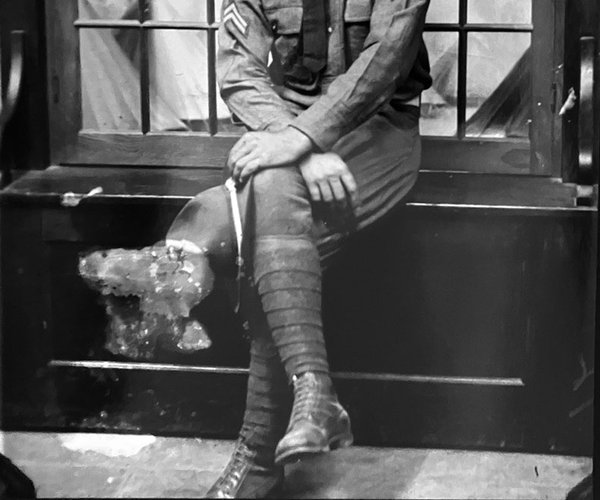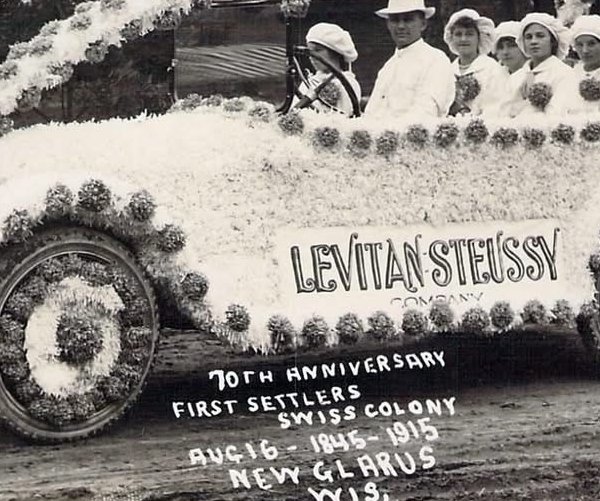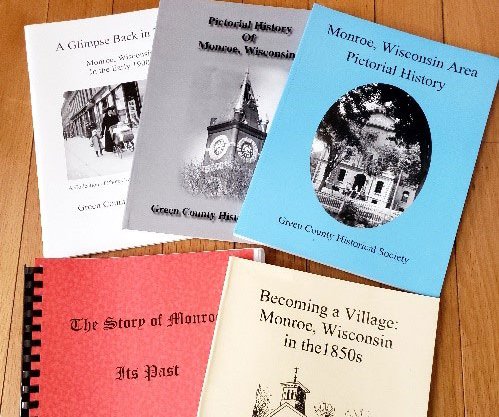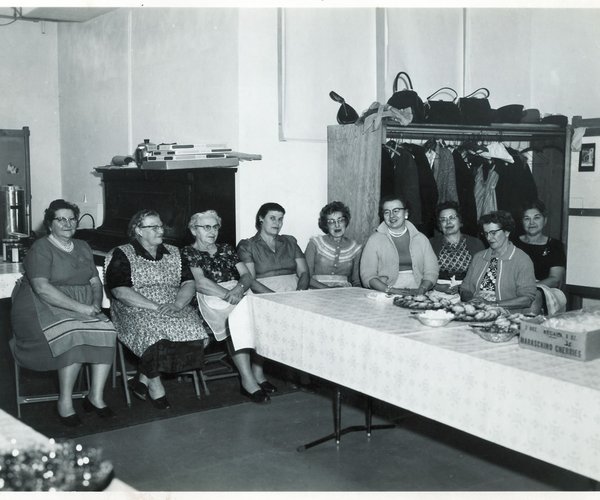About 150 Masons attended the formal dedication of the new Masonic Temple on the north side of the Square on Friday afternoon, December 6. Among other entertainment, the Monroe Masonic Quartet, composed of Arthur Spoerry, L. W. Barnes, Edwin Schuetze, and Paul T. Schulze, presented vocal numbers. Jacob Benkert was presented with a 50-year certificate. Dinner was served in the dining room by the Eastern Star. A program was given in the evening, followed by cards and dancing.
The public was invited to tour the building on Sunday afternoon, December 15 between 2:00 and 5:00. The center entrance had a store on each side which measured 45’ x 16.5’. The hallway entered into a dining room/dance hall that was 40 x 43, which could seat 350 people or provide comfortable dancing for 75 couples. To the east was the kitchen and to the west a woman’s restroom.
A stairway to the second floor leads to the women’s lounge and restrooms on the southeast side with the hallway that separates them from the men’s section on the west. The men’s lounge had a “handsome carved desk table, made by Henry G. Van Wagenen and presented to his wife on their first wedding anniversary. A remnant of old red carpet salvaged from the first Masonic Hall above the First National Bank hung in the hallway [and still does today].
Beyond the anteroom on the second floor are two doors that lead to the large, high ceiling chapter room, which is 56 x 42 and 19 feet high. The walls were painted in shades of yellow and the ceiling had graduated levels. On the north end of the room was the dias [stage] with two rows of opera chairs on raised levels on the east and west walls, which allowed seating for 100 persons. Pictures could be projected from the south wall.
On the third floor were a music room with a small organ and the projection room. There was also a spacious recreation room with billiard and pool tables, card tables, library and chairs. This room was “naturally lighted by windows across the entire frontage of the building.” At that time three pictures hung on the wall of the recreation room, one of Judge Brooks Dunwiddie, first member here, Dr. L. A. Moore, who had been grand Commander of the state Knights Templar, and Solomon Levitan. Another relic was the “sword given by citizens of the city to Capt. R. B. Stevenson on September 20, 1862 in recognition of his Civil War service; he was the first master of the Lodge having served in 1850, the founding of the Smith Lodge.
Between 800 and 900 people visited the Temple that afternoon. “There was no formality in the program. Hosts and hostesses were present to greet the visitors and show them through the attractive building.” Both storefronts have remained occupied for the past 90 years with Dixie Frox Shop [later Post’s Dixie Shop] being one of the first renters of the east store. The Dixie Shop remained in that location for more than 30 years.
Lottie Benkert wrote in April 1955 that there was a “Burning the Mortgage” celebration on January 28, 1941 with 350 Mason, Stars, and guests present. Nothing was found in the newspaper about that event.
The next two paragraphs are from “The First One Hundred Years” booklet put out by the Smith Lodge in 1950. “In addition to the pleasure and inspiration which the new Temple gave to Smith Lodge and the other bodies in our regular activities, it gave to us the possibility of expanding and enriching our social life. This, in itself, has been a benefit to Masonry in Monroe. At present, we are entirely out of debt and from the rentals received from the bodies and the store spaces, we are able to care for the maintenance and improvements as desired.
“Many happy occasions, worthy of mention, have been held in the Temple, when we have entertained brothers and sisters from near and far, to a number which has taxed our capacity. Monroe Masons have become known in this region for hospitality and friendliness. This has been possible through the quarters provided and the ability and personality of our leaders.”
The Masons have many fundamental beliefs. The core ethical principles of Freemasonry are about compassion and tolerance for all mankind. Freemasons do not use their position in the fraternity to advance an agenda, whether it be political, professional, religious, or secular. Freemasonry is a voluntary organization promoting a way of life that binds men together in a worldwide brotherhood.
A major beneficiary of the Smith Lodge is the Shriners Hospitals for Children. They also donate money for two scholarships to Monroe High School graduates each year, have donated fire suppression kits to the Monroe City Fire Department, the Monroe Rural Fire Department, as well as the Green County Sheriffs Department. In addition they also support two Boy Scouts Troops, 101B and 101G, who meet at their building. In addition they provide space for Shakespeare on the Square and the Winter Farmers Market.
The Smith Lodge is now the only surviving Order after 175 years in Monroe, so they have the total responsibility of maintaining the building. Even though there are no longer 450 members from all of the Orders like there had been decades before, the 50 or so members still do it. They meet at 6:30 p.m. on the first and third Thursdays of each month.
The Masons have a motto: “To Be One, Ask One.” That simply means that if you want to become a member, all you have to do is ask a member what you must do to join and they will direct you. If you don’t know a Freemason, you can go to wimasons.org to begin your journey.
— Matt Figi is a Monroe resident and a local historian. His column will appear periodically on Saturdays in the Times. He can be reached at mfigi48@tds.net or at 608-325-6503.





